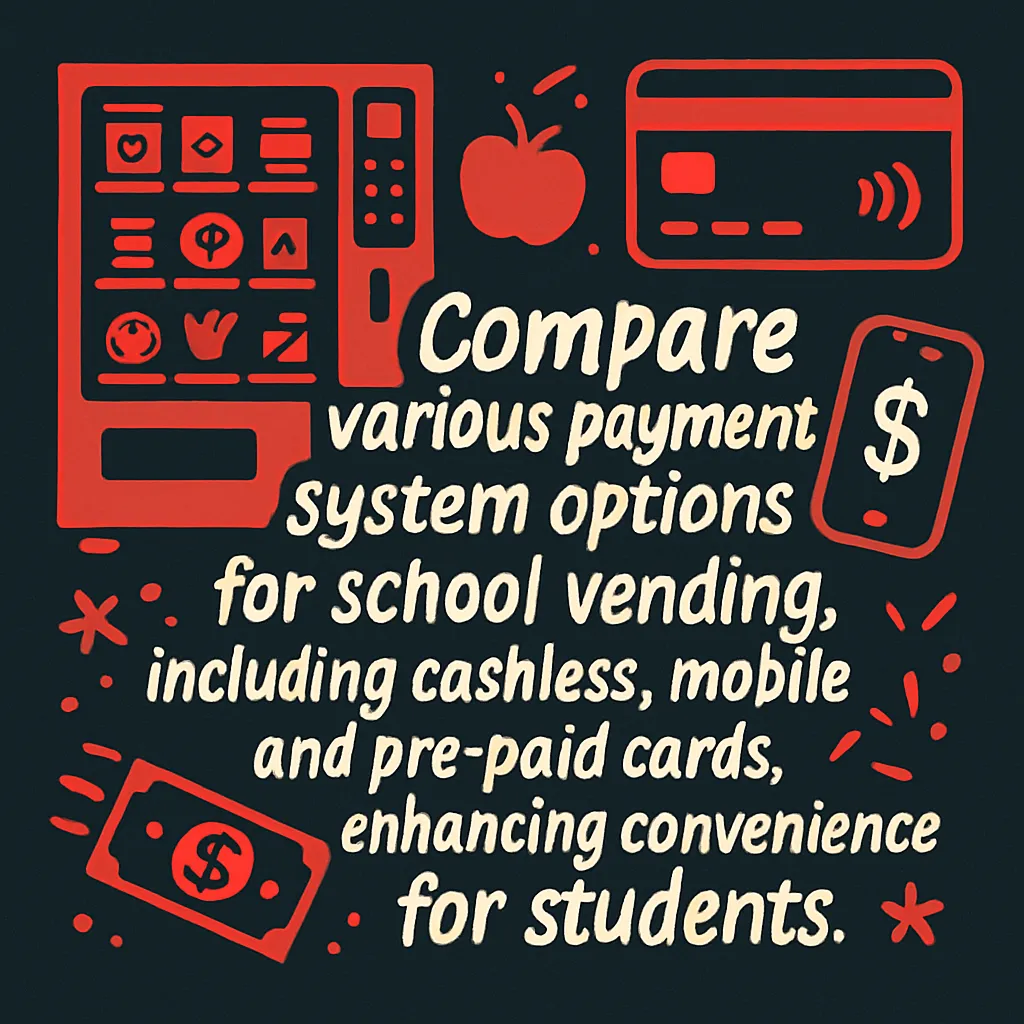Payment System Options for School Vending
Compare various payment system options for school vending, including cashless, mobile, and pre-paid cards, enhancing convenience for students.
Back to Vending for Schools ResourcesCompare various payment system options for school vending, including cashless, mobile, and pre-paid cards, enhancing convenience for students.
Back to Vending for Schools ResourcesAdopt advanced payment systems for school vending machines to provide students with convenient, secure, and rapid transaction options, from cashless apps to pre-paid campus cards.
![]() Cashless and mobile payments offer ultimate convenience
Cashless and mobile payments offer ultimate convenience
![]() Pre-paid campus cards help manage student spending
Pre-paid campus cards help manage student spending
![]() Modern systems speed up lines and reduce forgotten cash issues
Modern systems speed up lines and reduce forgotten cash issues

In today's fast-paced educational environments, providing convenient access to snacks and beverages for students is more important than ever. The choice of payment system for school vending machines can significantly impact student satisfaction, operational efficiency, and even revenue. Schools are increasingly moving beyond traditional cash-only models to embrace a range of modern options that cater to the digital-native generation.
Cashless payment systems are transforming school vending. These systems allow students to use credit or debit cards, mobile payment apps, or even dedicated pre-paid campus cards to make purchases. The benefits are numerous: reduced risk of theft or lost cash, faster transaction times, and greater convenience for students who may not always carry physical money. This shift aligns well with broader trends in digital payments and helps schools provide a seamless, modern experience.
Mobile payment options like Apple Pay, Google Pay, and other contactless systems are particularly popular among students. Many already use these apps in their daily lives, making vending machine purchases intuitive and quick. Integrating these solutions into school vending ensures that students can grab a snack or drink without fumbling for cards or coins, improving throughput during busy break times. Learn more about how modern payment systems function in vending machines by reading How Does Cashless Vending Work?.
For parents and school administrators, pre-paid campus cards offer an ideal blend of convenience and control. Parents can load funds onto these cards, allowing students to make purchases while limiting total spending. This helps teach financial responsibility and ensures that funds are used specifically for school-related vending. Such systems can also be integrated with existing student ID cards, reducing the number of cards a student needs to carry. This also ties into overall school nutrition efforts, as discussed in Healthy Snack Policy for Schools.
Implementing advanced payment systems offers more than just transactional convenience. They can provide valuable data on popular products and purchasing patterns, helping schools and vending operators optimize inventory and offerings. Moreover, the enhanced security and reduced handling of cash simplify operations and minimize potential issues. For guidelines on meeting compliance, review Healthy Vending Compliance for Schools. By embracing these payment innovations, schools can create a more efficient, user-friendly, and secure vending experience for their entire student body.
Common options include cash (coins, bills), cashless systems (credit/debit cards), mobile payments (Apple Pay, Google Pay), and pre-paid campus cards.
Cashless systems offer convenience, reduce the need for students to carry cash, minimize theft risks, and improve transaction speed.
Yes, many modern vending machines support mobile payment methods like Apple Pay, Google Pay, and other contactless payment apps, offering students a familiar and easy way to purchase.
Pre-paid campus cards allow parents to load funds, helping manage student spending, and also offer a secure form of payment that eliminates the need for cash or bank cards.
Modern payment systems can increase sales by making purchases easier and faster, reducing missed sales due to lack of cash, and appealing to a wider range of students.
Reputable cashless systems use encrypted transactions to protect financial data, making them generally secure. Schools should choose providers with strong security protocols.
Schools should consider student demographics, average transaction value, existing campus card systems, and the desired level of parental control.
Machines equipped with cashless and mobile payment readers may have higher initial costs, but the increased sales and operational efficiencies often lead to a positive return on investment.
Yes, many contemporary vending machines are designed to accept multiple payment types, including cash, cards, and mobile payments, providing maximum flexibility for users.
Connectivity (like WiFi or cellular) enables real-time transaction processing, remote monitoring of sales data, and over-the-air software updates for payment systems.